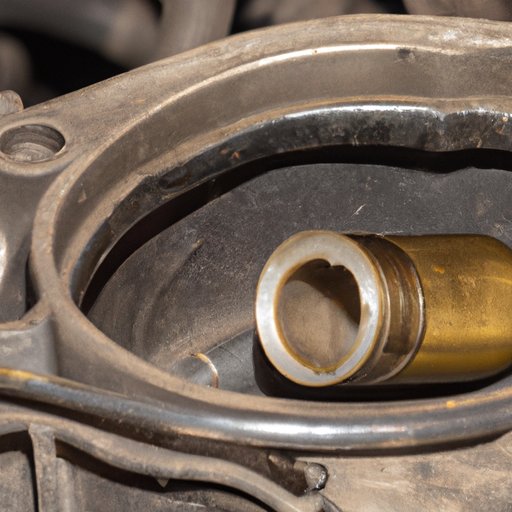The Not-So-Sweet Smell of Engine Trouble
My heart sank as the engine of my beloved car started to sputter and shake. A quick glance at the dashboard revealed the dreaded “Check Engine” light staring me in the face. Little did I know, I was about to embark on a costly journey to diagnose and fix a cylinder misfire. In this article, we’ll dive into the world of cylinder misfires, exploring their causes, symptoms, and most importantly, the dreaded cost of repairs.

Image: www.tffn.net
Cylinder Misfire: A Mechanical Hiccup
A cylinder misfire occurs when one or more cylinders in an engine fail to combust fuel properly. This results in a loss of power, rough idling, and increased fuel consumption. The causes can range from faulty spark plugs or ignition coils to issues with fuel injectors, valves, or even mechanical wear and tear.
Diagnosing the Misfiring Culprit
Identifying the root cause of a cylinder misfire requires a thorough inspection by a qualified mechanic. Using diagnostic tools and their expertise, they will pinpoint the misfiring cylinder and determine the underlying issue. Common culprits include worn spark plugs, faulty ignition coils, or damaged fuel injectors.
Repair Costs: A Range of Expenses
The cost to fix a cylinder misfire varies significantly depending on the severity of the issue and the make and model of the vehicle. Here’s a breakdown of potential expenses:
- Spark plugs: Replacing spark plugs is a relatively inexpensive repair, typically costing between $20-$60 per spark plug plus labor.
- Ignition coils: Faulty ignition coils can be more costly, ranging from $50-$200 per coil, excluding labor.
- Fuel injectors: Replacing fuel injectors can be an expensive endeavor, with costs varying from $200-$500 per injector, depending on the vehicle.
- Other parts and labor: Additional parts and labor costs may be incurred depending on the underlying cause of the misfire.

Image: www.youtube.com
Expert Tips and Advice
- Regular maintenance is key: Regular tune-ups and vehicle maintenance can help prevent misfires by ensuring all components are in good condition.
- Quality parts are worth the investment: When replacing misfiring components, opt for high-quality parts to avoid premature failures.
- Don’t ignore the “Check Engine” light: If your vehicle’s “Check Engine” light is illuminated, don’t ignore it. Address the issue promptly to prevent further damage and costly repairs.
- Consider extended warranties: Extended warranties can provide peace of mind by covering the cost of unexpected repairs, including cylinder misfires.
FAQs
- Q: What are the signs of a cylinder misfire?
A: Rough idling, loss of power, increased fuel consumption, and a “Check Engine” light illumination are telltale signs of a cylinder misfire. - Q: Can I fix a cylinder misfire myself?
A: While simple misfires can be diagnosed and repaired by experienced DIYers, complex issues may require a mechanic’s expertise. - Q: How long can I drive with a cylinder misfire?
A: Continued driving with a misfiring cylinder is not advisable as it can lead to engine damage. It’s best to have the issue addressed promptly.
How Much Is It To Fix A Cylinder Misfire
Conclusion
A cylinder misfire can be an unexpected and costly problem, but understanding the causes, symptoms, and repair costs can help you make informed decisions. By following expert advice and addressing the issue promptly, you can restore your vehicle’s performance, save money in the long run, and prevent further engine damage.
So, the next time you hear that unmistakable engine sputter, don’t panic. Instead, take a deep breath, remember this guide, and reach out to a qualified mechanic to get your vehicle back in tip-top shape. Did you find this article informative? If you have any further questions or experiences with cylinder misfires, feel free to share them in the comments below.